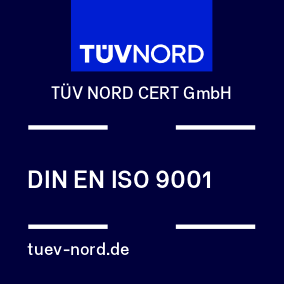Main content:
QUESTIONS?
Here you will find some "frequently asked questions" and answers about the unitary patent. If you don't find the answer to your question, please contact our Customer Service Center (PHONE +43 1 534 24, info(at)patentamt.at)
Glossary (definitions)
Unitary patent, EU patent, EU unitary patent, unitary patent or European Patent with unitary effect, English: UP = Unitary Patent
Unified Patent Court (UPC)
The unitary patent is a "European patent with unitary effect", i.e. a European patent granted by the European Patent Office which, after grant, is given unitary effect for the territory of the participating Member States at the request of the patentee.
Use this link for more information: www.patentamt.at/en/patents/apply-for-patents/international-patents/unitary-patent
The Unitary Patent came into force on June 1, 2023.
There are 18 member states: Austria, Belgium, Bulgaria, Denmark, Estonia, Finland, France, Germany, Italy, Latvia, Lithuania, Luxembourg, Malta, the Netherlands, Portugal, Romania, Sweden and Slovenia. All member states of the EU can also join in the future. However, this does not increase the scope of protection of unitary patents once they have been granted (future "generations" of unitary patents with different territorial effects may arise).
The granting of a European patent is a prerequisite for a request for unitary effect. The applicants must therefore file a European patent application with the European Patent Office. All 25 EU MS (entire EU except Croatia and Spain) must be designated with the same claims. As soon as the European patent is granted, the applicants can apply for unitary effect: an ordinary European patent thus becomes a European patent with unitary effect (a "unitary patent").
ATTENTION: after the reference to the grant of the European patent, the request for unitary effect MUST be made within one month. In contrast to European patents, which have to be validated in individual countries, the unitary patent is automatically valid in all - currently 18 - member states.
Unified protection, what is it?
A unitary patent has a uniform character, i.e. it offers uniform protection and has the same effect in all participating member states. It may only be limited, transferred, annulled or terminated with respect to all participating Member States. A caveat: it is only effective in those member states that are participants in the unitary patent/unitary patent court system at the time of grant.
Yes, such double protection is possible in Austria.
Example:An Austrian company registers nationally in Austria and within 6 months receives a preliminary decision and thus information about the basic patentability of the invention. With regard to the quality of the documents, the company now has a certain certainty and can therefore apply for a unitary patent. "Double" patent protection means additional stability.
Because: With the unitary patent you are subject to the jurisdiction of the Unified Patent Court and with the Austrian patent to national jurisdiction. If e.g. B. the unitary patent falls, the national patent remains unaffected.
Yes, a European patent can also be named in a PCT application. And after registration by the European Patent Office, one can apply for a patent with unitary effect.
Will it be cheaper/more expensive than a previous European patent? The costs remain the same until the patent is granted – as with the European Patent Office. Cost savings only come about after the registration process, as there are no expensive translations and the annual fees are moderate. The annual fees are based on the four states with the largest patent volumes. In short: You pay for four countries, but get protection for currently 18 and in the final expansion for up to 24 countries.
The unitary patent, like the classic European patent, can applied for in German, English or French. The patent claims are translated into these three languages by the European Patent Office.
During a transition period - of twelve years - all unitary patents must be available in English and in another official language of the EU. After this period, no translation will usually be required by the patent applicant.
The unitary patent needs its own court of justice, whose decisions apply in all participating member states. The court has jurisdiction over the unitary patent and the “classic” European patents. The possibility of an opt-out (i.e. exclusion of the unitary patent court; any disputes should only be settled before national courts) will only exist for "classic" European patents. For the new unitary patent, the unitary jurisdiction ALWAYS applies. This court essentially decides on applications for nullity (with simultaneous effect in all participating states), infringement proceedings and applications for a declaratory judgment.
Note: The decisions of the court have a uniform effect. In other words, the principle “everywhere or nowhere” applies. If protection falls away in one country, it's gone everywhere.
Incidentally, the Unified Patent Court is not formally an EU institution, but an international court of justice, although only EU member states are admitted. After leaving the EU, Great Britain is also not present at the unitary patent or the unitary patent court.
According to the contract, the central chamber, where the actions for annulment are heard, has its seat in Paris with a branch in Munich and Milano– depending on the technical area. Each country can voluntarily set up a local chamber for infringement proceedings. Several countries can also join together to form a regional chamber.
In Vienna we have set up a local chamber for you. It is located in the premises of the Austrian Patent Office.
This has the advantage that processes can be carried out in German and in consensus also in English.
No. According to the prevailing interpretation, only EU countries can participate in the system. (The UK decided not to participate.)
Actions for annulment are filed with the central chamber (depending on the technical field in Paris, Munich our Milano). The local and regional chambers are responsible for infringement proceedings. The plaintiff can sue where the infringement occurred or where the defendant is based. If there is no local or regional chamber, one goes to the central chamber.
If you have opted for a unitary patent, then you cannot reject the unitary jurisdiction. If, on the other hand, you have a classic European patent, you can object to the patent court during a transitional period (of at least 7 years). This option is called an opt-out. In this case, the respective national courts continue to have jurisdiction for complaints. No opt-out is possible for pending lawsuits.
As soon as the grant of the European patent has been announced in the European Patent Bulletin, patent proprietors have one month to submit an "application for unitary effect" to the European Patent Office.
ATTENTION: this deadline cannot be extended!
If the patent holders have their registered office or place of residence in a contracting state, they can submit the application themselves.
If the patent holders do not have their registered office or place of residence in a contracting state, a lawyer must be consulted.
We would be happy to help you to get to know this new possibility and to use it appropriately. It still applies: a good basis for every international application is a search. A national patent or utility model application at the Austrian Patent Office always includes a search. You can also order these separately from us - they cost € 262 online. With a national patent or utility model application, you also secure the priority date. After that, you can still decide how to proceed. We also advise you and discuss possible strategies with you. Where are my key markets in terms of patent protection? Where do I do my first registration? To answer these questions, we offer a range of services and funding opportunities, such as discover.IP, PRIO - the provisional patent application, or the patent cheque.

